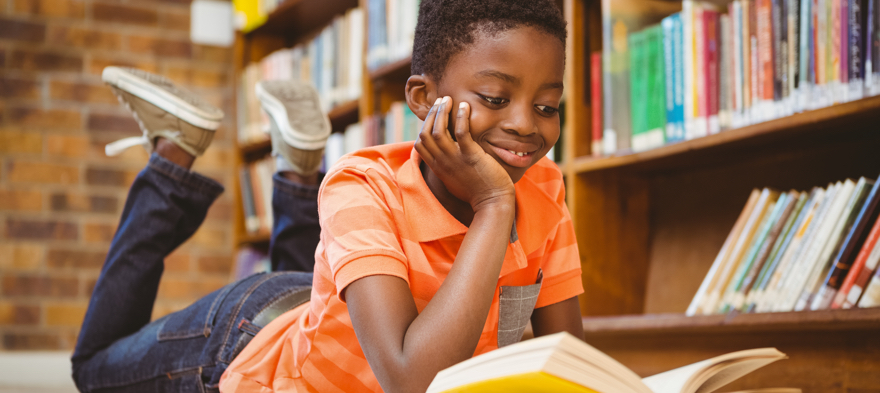
As a teacher, I know that to get students learning they must first enjoy the idea of learning. Teaching English language arts may seem easy, but nothing about my class is easy. I require fifth graders to analyze themes in connection with their own lives and close-read parts of the text for deeper understanding. The real problem occurs when students in my class find it impossible to connect to the texts they’re reading.
I teach on the Northeast side of Houston, in a predominately minority community. The schools in the area are considered high-need and the students are “at-risk” youth, whose environment doesn’t set them up for academic success. I know that to motivate them, I must introduce them to culturally-relevant literature. In other words, [pullquote position="right"]I have to give my students of color texts they can connect to.[/pullquote]
I have challenged my students to think outside of their limited environment by discovering different worlds like Aguascalientes, Mexico from Pam Munoz Ryan’s “Esperanza Rising” or the rich enduring culture that is New Orleans, Louisiana from Jewell Parker Rhodes' “Ninth Ward.” My students were still apprehensive at the start of these books, but as we engaged with the literature, they began to understand themselves more. They were able to make connections with the text and saw themselves within the characters.
Two of my students, Damond and Deshawn, were not eager readers. At the beginning of the academic year, I asked my class, “Whose favorite subject is reading?” Damond’s and Deshawn’s hands were planted firmly on their desks. I told the class that by the end of the school year, they would all have a love for reading.
That year, we read a multitude of short stories and novels that connected to them on a personal and cultural level. These included "The Crossover" by Kwame Alexander, a novel about a young Black boy coming of age as he deals with shifting relationships and family illness, and "The Jumping Tree" by Rene Saldana Jr., which talks about a young Hispanic boy learning what it means to grow up and become a man.
Towards the end of the year, I asked again, “Whose favorite subject is reading?” This time, I saw both Deshawn and Damond raise their hands with smiles on their faces. I had kept my promise to my students, but I wanted to know, what changed their minds?
You have been a great teacher and gave me the hype to love reading. I really liked how you used to read aloud and made the characters come alive. One novel I really loved was "The Crossover," because the words on the pages were different and I really related to the main character Josh Bell. He and my older brother both play basketball. So I was very excited to read the book because I had a chance to talk about my real life and relate it to the text.
– Deshawn
I got to learn new things and reading was getting easier as the year went on. My favorite book that we read this year was "Esperanza Rising," during Hispanic Heritage Month. The book really built suspense and gave me a look at what it’s like in a different culture. It was cool to learn about Mexico and California during the Great Depression!
– Damond
Because of these books, my students became invested in analyzing literature and genuinely interested in learning. They effectively became avid readers and scholars, realizing their individual truths through culturally-relevant pedagogy. For this to happen, [pullquote]I needed to open their minds far beyond their neighborhood to let them know there is an entire world out there and that they belong in it and can see themselves in it.[/pullquote]
All stakeholders, including teachers, instructional coaches, principals and districts must make culturally-relevant curriculum accessible to all students, and especially students in high-need schools. If students who have no intrinsic desire to do well in school have a stake in their own learning, if they can connect to their class curriculum, they will find success.
Incredible learning happens in such classrooms because, there, students have a voice in an otherwise voiceless curriculum. This is the type of learning my students need now to set them up for success in the future.
Travon Jefferson teaches sixth grade social studies at Yes Prep Hobby in the Yes Prep Public Schools in Houston, Texas. He is a 2019-20 Teach Plus Texas Senior Fellow.
If you have a child with disabilities, you’re not alone: According to the latest data, over 7 million American schoolchildren — 14% of all students ages 3-21 — are classified as eligible for special...
The fight for educational equity has never been just about schools. The real North Star for this work is providing opportunities for each child to thrive into adulthood. This means that our advocacy...
The story you tell yourself about your own math ability tends to become true. This isn’t some Oprah aphorism about attracting what you want from the universe. Well, I guess it kind of is, but...
Your donations support the voices who challenge decision makers to provide the learning opportunities all children need to thrive.
Ed Post is the flagship website platform of brightbeam, a 501(c3) network of education activists and influencers demanding a better education and a brighter future for every child.
© 2020–2024 brightbeam. All rights reserved.